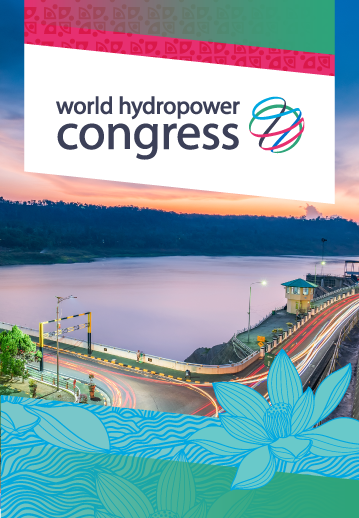#IHA30 Built to protect: tracing the roots of flood control at the Three Gorges Project
As part of IHA’s 30th anniversary campaign, we are highlighting the powerful stories behind hydropower’s role in managing water systems around the world – not only through clean energy generation, but also through essential services such as flood control. China Three Gorges Corporation (CTG) is one of IHA’s longest-standing members, having joined in 2005. In this article, drawing on over a century of hydrological records and operational experience, we reflect on the origins and evolution of the project – and how it prevented the displacement of 600,000 people living in the flood diversion area during record flooding in 2020.
In Sandouping Town, Yichang City, Hubei Province, the ancient wooden pillars of Huangling Temple bear silent witness to one of the most devastating floods in the Yangtze River’s history. Overlooking the river, the temple – reconstructed during the Wanli period of the Ming Dynasty – still carries the high-water marks from the catastrophic floods of 1870. These stains in the wood are more than relics of the past; they are a reminder of why the Three Gorges Project exists.

Between 13 and 19 July 1870, torrential rains in the upper reaches of the Yangtze River unleashed record-breaking floodwaters. Peak flows surged to 105,000 m³/s in Yichang and surpassed 110,000 m³/s in Zhijiang, inundating more than 30,000 square kilometres of land.
More than a century later, those flood marks remain etched into the 36 wooden pillars of Huangling Temple – historical records that would later inform the design of one of the most ambitious water management projects in the world.

The water level recorded in 1870 is recognised as the largest flood in local history, providing crucial reference data for the development of the Three Gorges Project’s flood control standards and reservoir dispatch planning.
When the Three Gorges Project was conceived, its primary task and fundamental function was not power generation, but flood control – to prevent history from repeating itself.

With a flood control capacity of 22.15 billion cubic metres, the Three Gorges Project plays a fundamental role in protecting the middle and lower reaches of the Yangtze River. The project is engineered to manage floods that occur once every 100, 1,000, or even 10,000 years – through carefully calibrated reservoir dispatching.
This capability was put to the test in 2020, when the Yangtze experienced the largest flood peak since the founding of the People’s Republic of China. Flowing at 78,000 m³/s, the volume of water could have filled West Lake in just three minutes or Taihu Lake in under 16 hours. Thanks to timely and precise flood regulation, the Three Gorges Project reduced the downstream flow to 49,400 m³/s, intercepting 29.5 billion m³ of floodwater and easing the pressure on cities and communities downstream.
Hydrological modelling shows that, without this intervention, the Jingjiang Flood Diversion Area would have been triggered – displacing around 600,000 people and submerging nearly 33,000 hectares of farmland and 6,600 hectares of aquaculture area.
Today, the flood protection capacity of the Yangtze basin has grown far beyond the dam itself. Coordinated dispatching of six major hydropower stations – Wudongde, Baihetan, Xiluodu, Xiangjiaba, Three Gorges and Gezhouba – provides a combined flood control capacity of 37.6 billion m³, more than half the total reservoir flood control capacity across the middle and upper reaches of the river.
Backed by cutting-edge digital tools, including the Industrial Internet Platform, the Digital Twin Three Gorges Project, and a defense system for rainfall and hydrological monitoring, China Three Gorges Corporation (CTG) is strengthening its proactive, intelligent approach to flood management.
With forecasting, early warning, simulation drills, and emergency response at its core, the system has so far successfully intercepted floodwater nearly 70 times – totalling over 221 billion m³. Since the reservoir reached its design level of 175 metres in 2010, it has replenished downstream areas with an average of 21 billion m³ of water each year.
Flood control remains at the heart of CTG’s work. But its impact doesn’t end there. The coordinated management of water across the Yangtze River system supports not just flood protection, but also water supply, ecological conservation, navigation and clean power generation, safeguarding livelihoods and quality of life for tens of millions of people.










